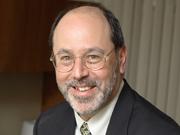Rebalancing our twin needs for higher education and career education

Last week I heard a report by Uri Berliner, National Public Radio, on the need to increase connecting skilled labor with manufacturing needs. One portion of Berliner’s report struck an all-to-familiar chord:
In 2003, there were about 489,000 registered apprentices in the U.S., according to the Labor Department. Last year, there were only around 288,000. Some of that can be chalked up to the recession and companies investing less in training. But people involved in apprenticeships see something else going on: the belief that somehow it’s a failure when a young person doesn’t go from high school to a four-year college.
“It’s like déjà vu all over again,” a line famously uttered by American baseball icon Yogi Barra, serves as an apt summation of where we seem to be. In my last installment for FE News, “Re-Purposing Higher Education for the Future,” I suggested that both the United States’ and United Kingdom’s higher education systems were becoming increasingly imbalanced, with greater emphasis placed on expensive university versus career and vocational pathways—outlets better suited to real employment needs in the manufacturing sector. As promised, in this column I will discuss “some ways in which we as higher education and workforce training leaders can begin to attain balance” and address our economic and employment challenges.
Change the Messaging: We need to adjust our messaging when it comes to helping young people and their parents queue into the appropriate and financially doable options for meaningful and relevant employment. In our zeal to promote and extoll the virtues of higher education, we inadvertently and, in my opinion, ill-advisedly, created a false dichotomy between two equally important and necessary sectors–the four-year or university sector, and the vocational or career education sectors. The refrain by employers is familiar–there are well-paying jobs available right now throughout our economies that do not require a four-year diploma, but which do require advanced and job-specific skills and competencies.
Showcase the Possible: I was profoundly affected during my visit last year to the World Skills UK/Skills Show in Birmingham. The power of engaging young British and their parents firsthand in the myriad possibilities and opportunities embodied by colleges of further education in the trades is “absolutely brilliant.” We have nothing like this in the United States as far as I know. In my mind, it’s a missed opportunity, and one that contributes to the pervasive misperception about career and vocational jobs not being creative and fulfilling.
Reimagine Government Policies: In the wake of the Second World War, the United States Congress created and invested intentionally in programs that bolstered the educational infrastructure of our economy–transforming what was possible and creating a robust middle class able to afford their own homes and send their children to college. Since the mid-1970s, we have consistently reduced public investment in community colleges–the American answer to colleges of further education–specifically, and higher education generally. This has led to an overemphasis on recruiting students into our more expensive institutions at the expense of maintaining the vocational and career sectors where employers now have the greatest challenge recruiting and retaining skilled workers.
Rekindle Our Leadership Talent: Perhaps most important of all, we need to reignite the leadership capacity of the heirs of the “GI Generation” or “Greatest Generation”–the Baby Boomers born in the aftermath of World War II, between 1946 and 1964. This generational cohort–of which I am a member–holds the majority of leadership positions throughout most sectors of our economy. It falls to us, then, to lead our nations to the rebalancing of our educational sectors. As the beneficiaries of the largest expansion of educational attainment levels, we must ensure that current and future generations have access to appropriate career and vocational pathways and the trappings of the good life. After all, it’s our responsibility and our destiny.
J. Noah Brown is the president and CEO of the Association of Community College Trustees and the author of First in the World: Community Colleges and America’s Future. He is based in Washington, US











Responses